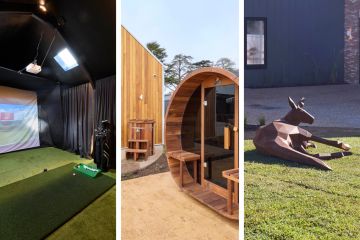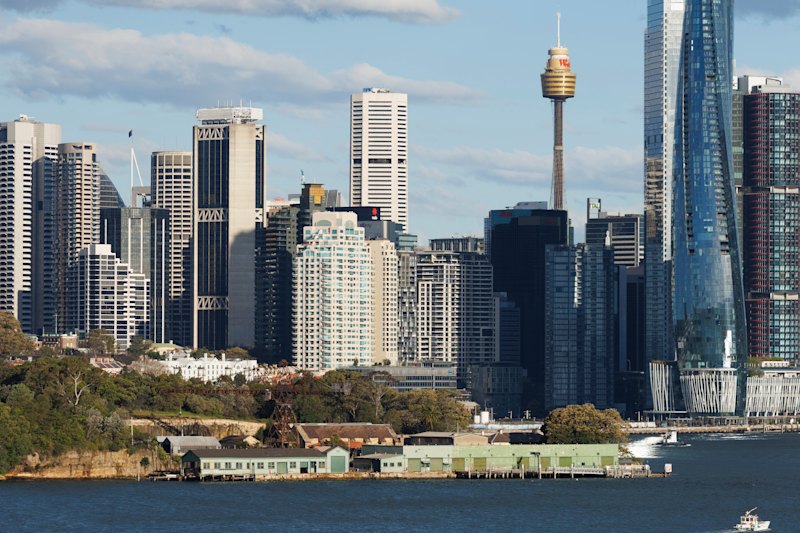Four things the smart homes of 2020 will have

Wardrobes that pick your outfits for you and homes that market themselves are just the tip of the iceberg for the properties of the future, a new report shows.
By 2020, 40 billion to 50 billion devices are expected to be “smart”, or a part of our home’s network of objects that communicate data to each other, according to white paper The Internet of Things: Evolution or Revolution? part one from AIG and the Consumer Electronics Association.
But what the connected, smart home of 2020 looks like is still up for debate, with impacts from the smart technology revolution set to impact almost every industry, from cars and clothes to factories.
David Clerk, founder and managing director of General Innovation Australia, said everything would literally be at the touch of a fingertip – even to fingerprint or retina scan access to the front door.
“The house may know who is in the room at any given time and set the lighting, entertainment or even the coffee machine and heating/cooling to the preferred settings,” he said.
Here are five predictions from the Internet of Things report that could shape the smart homes of the future.
Smart wardrobes
While some smart appliances in the home already exist, the “real value” of this technology in properties is when the connected appliances and other household objects communicate together.
Your existing thermostat already knows the temperature in your home – but it could go one step further.
It could then communicate the data with your home’s wardrobe system, which would suggest appropriate outfits for the day. The wardrobe could also sync with a user’s calendar – offering up appropriate clothes for a meeting.
Termite sensors
There are more than 350 species of termites in Australia, and one in four homes are affected by termites over their lifespan, according to Rentokil Pest Control.
With these statistics in mind, it only makes sense that an alert that termites are in the home would be welcomed by home owners.
Sensors would be embedded in specific risk areas and could protect home owners from electrical faults, dangerous gas, termite infestations, HVAC/boiler malfunctions and even general wear and tear.
“Even when a particular structure seems to be in top condition, analysts can pore over the massive amount of data captured by these embedded sensors to identify clues to future problems,” the report says.
Measure your energy usage
The energy industry has “long been at the forefront” of the available technology, with utility companies “innovating ways to read energy usage of commercial, industrial, and residential customers remotely”.
Effectively, this means better ways of improving your ability to track all your bills over time – but it could go further.
Conscious Futures’ Simon Dehne also said houses that track energy consumption were a strong possibility for the homes of the future, pointing to the impact this could have on the prices of “green” homes.
Yet he said it would also result in houses that can adjust their own energy consumption.
This could be through sensors in your clothes, according to Shawn DuBravac, chief economist of the CEA and report author.
He pointed to ”temperature sensors built into our clothes that … allow the room temperature to adjust”.
Smart ‘For Sale’ signs
It won’t just be inside the home that’s revolutionised – the selling process will also undergo substantial change.
Already, the report says some brokerage firms are experimenting with Apple’s iBeacon technology and For Sale signboards.
“The concept is that a prospective home buyer who passes a house for sale will receive a message on their smartphone from the iBeacon giving instant details on the house,” the report says.
When a person then enters the home, the iBeacon technology can provide prospective buyers with floor plans, video testimonials and renovation opportunities “likely in partnership with a home-improvement and hardware store”.
The future Internet of Things home would be able to “list itself” online and will be able to schedule its own open homes – by syncing with the owner’s calendar.
The possibilities of smart homes are already being seen in Australia.
In Reflections North Melbourne, an apartment development from Turnbull Cook and Revel Development Group, a mobile phone app has been designed to streamline the process for owners through construction and settlement to when they live in the block.
The app will include all insurance certificates, manuals for the building, meeting minutes and the ability to order keys and report maintenance issues with photos.
Revel Development Group director Daniel Caspar said the process of buying and maintaining an apartment was simplified through the app.
“Residents will have access to a range of services at the tap of a finger – from delivery, laundry and dry-cleaning co-ordination to event and restaurant bookings. Having friends over on Saturday and need to book the barbecue and dining facilities? It is a simple as logging on and filing a request,” he said.
This is just scratching the surface of what developments in the future could achieve, Tony Brown, public affairs manager – technology for nbn, said.
The internet was connecting people to social media at the moment, with the next step or “Internet 2.0” about machine-to-machine communication or the Internet of Things, he said.
“Some of the applications that will emerge we probably don’t have visibility of yet, but we are already seeing the possibilities offered by applications such as home automation where people can control various electronic devices in their homes remotely or remote monitor their homes for security purposes,” Brown said.
This could be a car that uploads its operating data when it comes back into your home network area and continuously sends that data to a mechanic or car dealership. This would quickly indicate any faults before they occur.
A report commissioned by the nbn and authored by Telsyte will be published next week on how Australian households will look in the connected future.
We recommend
States
Capital Cities
Capital Cities - Rentals
Popular Areas
Allhomes
More







